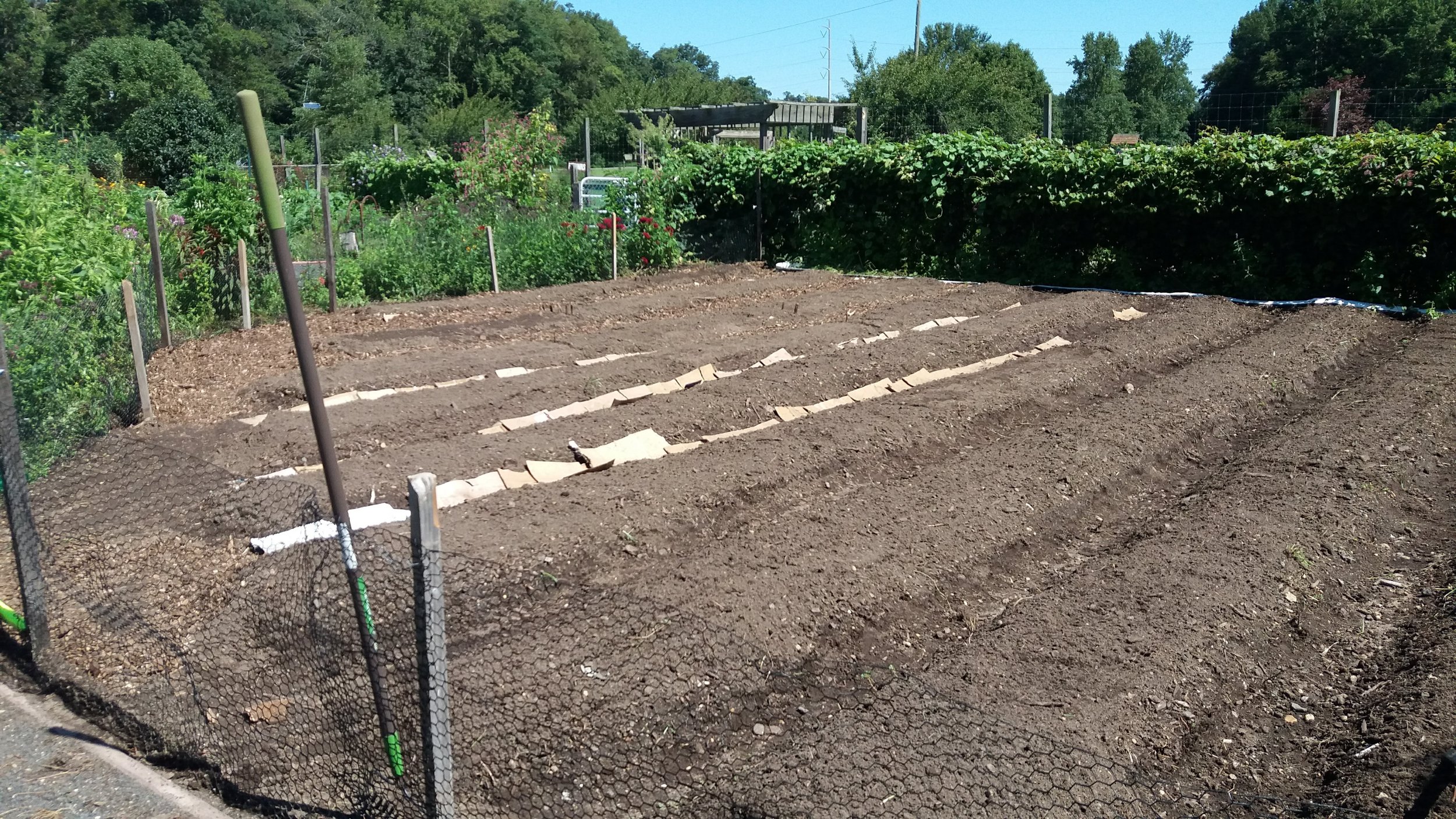March Check List - Spring Cleaning the Garden
Spring is just around the corner and it’s time to start thinking about getting your home garden ready for the new season. With the right preparation, you can create a beautiful and thriving outdoor space that will last all year long. Here are some tips to help you get started.
Above: Garden beds are cleaned out, rows formed, and cardboard laid down as weed block.
Clean up your garden: Start by removing any dead leaves, twigs, and debris from the garden. This will help to prevent any potential diseases or pests from overwintering in the garden. If you have perennials, prune back any dead growth to encourage new growth.
Test your soil: Before planting anything in your garden, it’s important to know what type of soil you have and what nutrients it may need. You can purchase a soil test kit at a local garden center or have a soil sample tested by your local agricultural extension office. The Rutgers Agricultural Experiment Station offers soil testing kits.
Choose the right plants: Consider what kind of plants will thrive in your garden based on the amount of sunlight, water, and soil type you have. It’s also important to choose plants that are suitable for your climate zone. Check out this article on plant profiles to choose which plants are right for your garden.
Plan your garden layout: Determine where you want to place your plants and what size they will grow to. This will help you to avoid overcrowding and ensure that your plants have enough space to grow and thrive. Here is an article on selecting a location for your garden or this article on planning your garden layout.
Start planting: When the soil temperature reaches the appropriate level, you can start planting your seeds and seedlings. Make sure to follow the instructions on the seed packets for planting depth and spacing. Check out this article for more information on starting from seed and transplanting.
Mulch your garden: Adding a layer of mulch to your garden can help to retain moisture, suppress weeds, and regulate soil temperature. Make sure to apply a 2-3 inch layer of mulch over the soil and around your plants.
Water your garden regularly: Make sure to water your garden regularly, especially during dry spells. Be careful not to over-water your plants as this can lead to root rot.
By following these steps, you can create a beautiful and thriving home garden that will provide you with years of enjoyment. With a little bit of effort, you can transform your outdoor space into a colorful and fragrant oasis.

